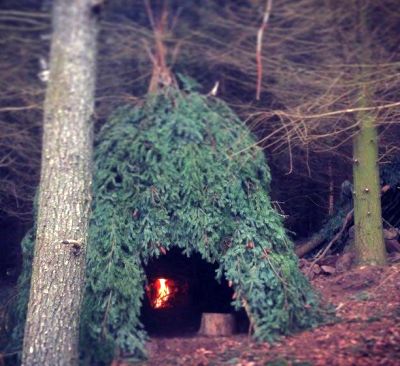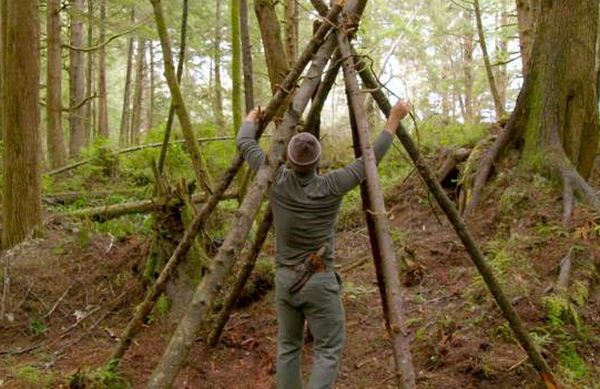A wickiup, also known as “tipi” or “teepee,” is a conical tent used by indigenous tribes a long time ago. Find out how to make a wickiup yourself.
What is a Wickiup?
 The term “wikiup” originated from the Algonquian word “wikiyap” which means “dwelling house.” This type of shelter may be old but it’s definitely not outdated. During olden times, Indian tribes used the wickiup as a shelter. This type of shelter allows you to build a fire inside without you suffocating. Its spacious area allows more than one person to sleep in it. This is the most fitting kind of a survival shelter in forests because it is easy to build and the materials to do so are readily available. It can be used as a temporary or a long-term home.
The term “wikiup” originated from the Algonquian word “wikiyap” which means “dwelling house.” This type of shelter may be old but it’s definitely not outdated. During olden times, Indian tribes used the wickiup as a shelter. This type of shelter allows you to build a fire inside without you suffocating. Its spacious area allows more than one person to sleep in it. This is the most fitting kind of a survival shelter in forests because it is easy to build and the materials to do so are readily available. It can be used as a temporary or a long-term home.
Find a suitable place to build your shelter. It should be well above the waterline and away from any visible flood areas. You should also take care to check for animal tracks and other signs to avoid any late night visitors. And, don’t forget to collect branches for your campfire and all the other things you’ll be needing to maximize the hours left while the sun is up.
Base Frame

The base of your shelter is important because it will keep your house standing firm. Your wickiup is cone-shaped, so you should design the frame like a tripod. Use three strong poles or wood available around you and build a tripod that will secure its place. For it to be stable, look for strong vines that will hold your tripod in place, preventing it from being dislocated. Tie it around the upper end of your frame and spread apart the other ends of the poles to make a space for you to get in. You can also use rocks to keep your frame from falling apart.
Weatherproofing
Animal skins are the material normally used for covering a wickiup but there are plenty of other options available in the wild. Branches, debris, and even moss are all fantastic options for covering. It’s also a great idea to keep a few contractor trash bags in your kit because they make an incredible covering that holds in heat and makes it waterproof. This will provide you with insulation and protection from severe weather conditions. Make sure not to leave holes or spaces to keep the heat from escaping, providing you warmth inside.
Bedding
Look for large leaves or even small branches to create a nest for you to sleep on inside. Don’t collect branches or leaves with spikes or sharp ends to avoid discomfort and injuries. Make sure to have sufficient space for you to lie on.
Final Touches
Add additional poles or wood to keep the debris stable. This will also support your framing. You can add another layer of debris to make sure the insulation is enough. Add leaves to avoid raindrops from running through your covering. Always store extra wood in case your fire burns it all up.
SF Source Survival Life Oct 2018
